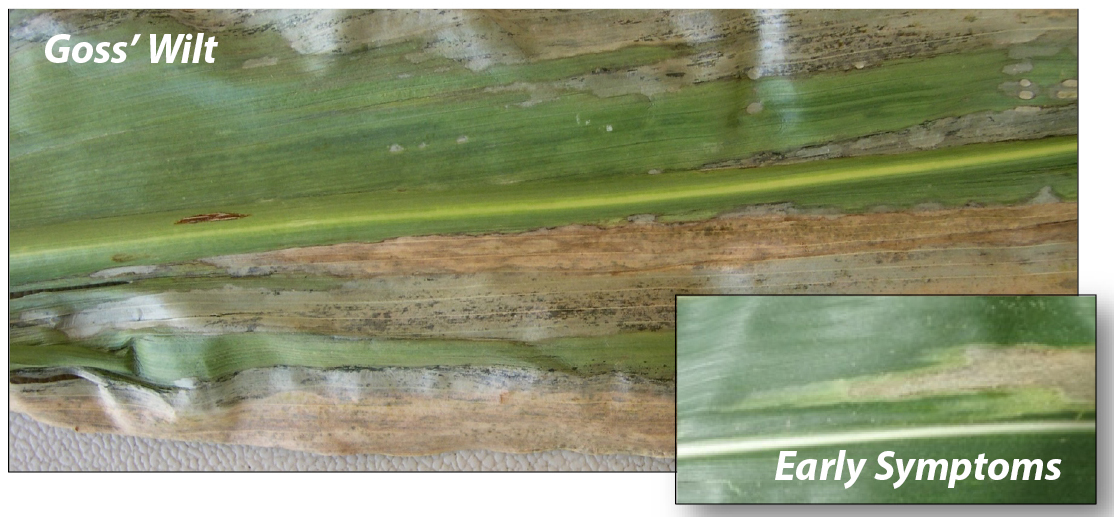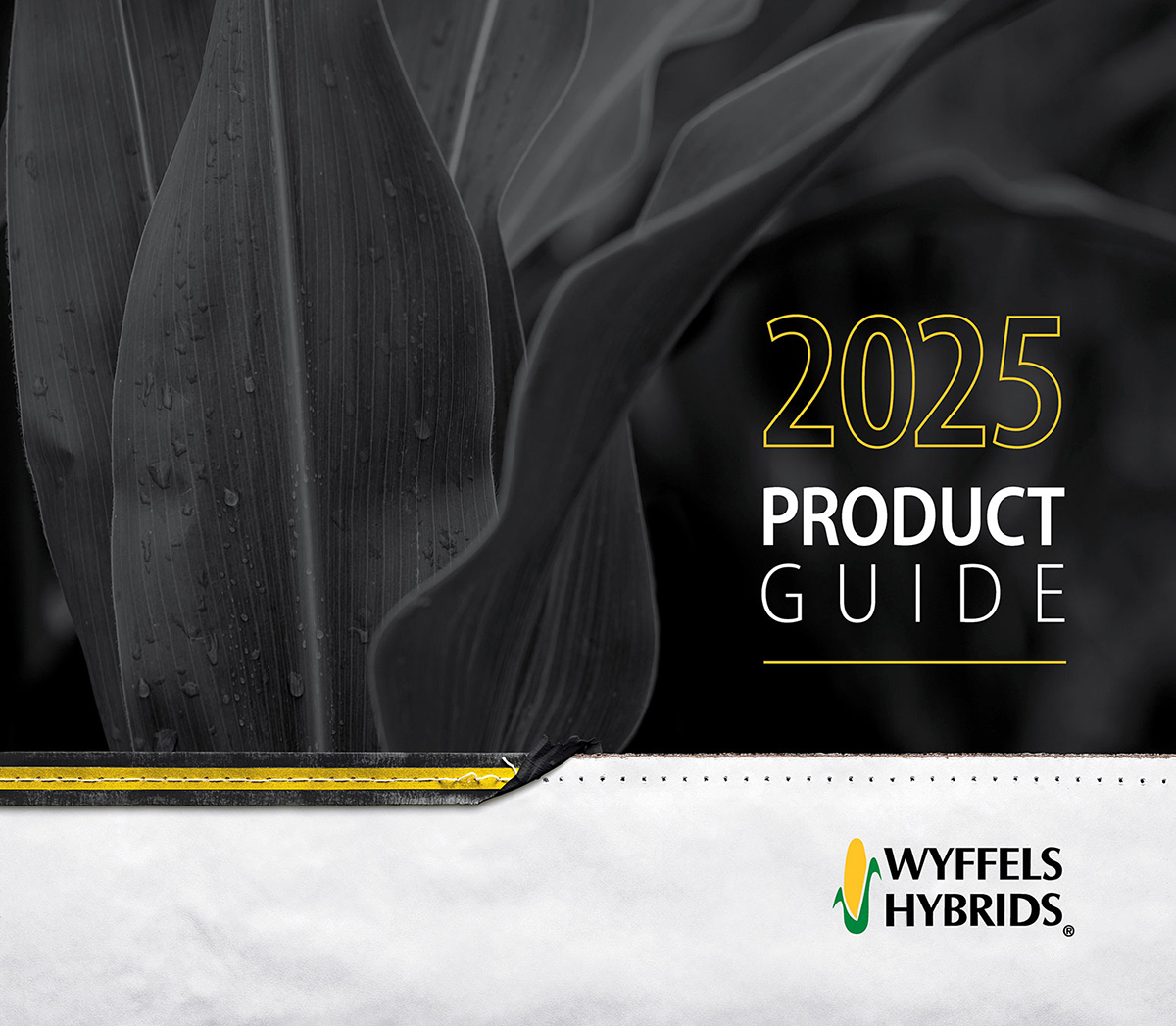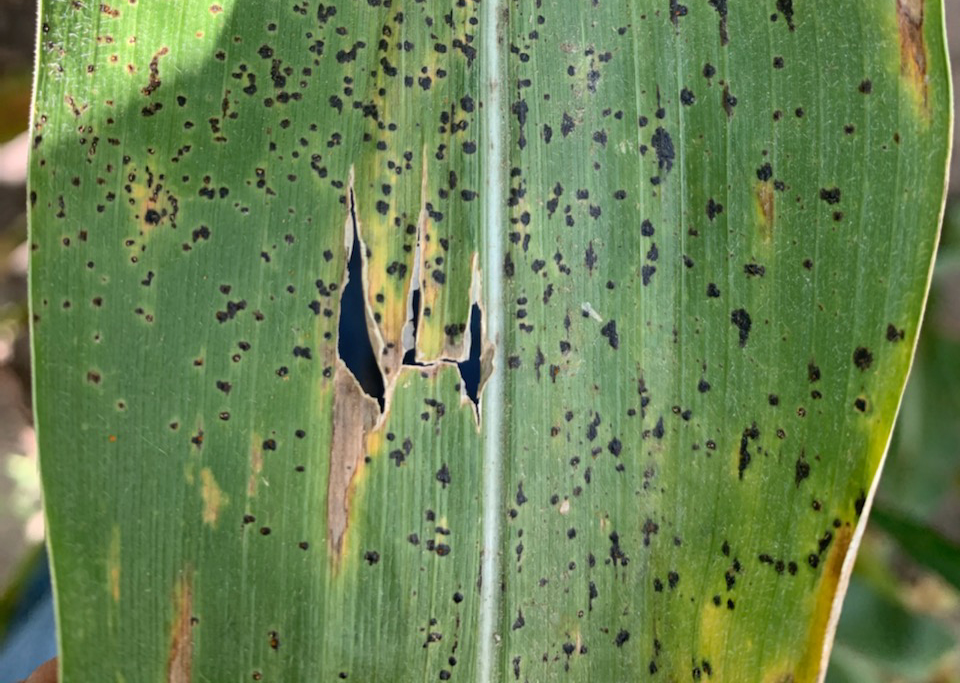Leaf diseases favor environments with above average rainfall. If diseases are identified in time there are options to control them to ensure they don’t affect yield potential. And now is the time to begin scouting for these diseases. A fungicide application should be considered for fields showing fungal disease symptoms.
Fields that are more prone to disease development include low lying fields, poorly drained fields, or fields with a high amount of corn residue on the surface. For more information on applying fungicides to Wyffels products, refer to the Wyffels Between the Rows® posted on www.wyffels.com.
Disease Identification and Management
This Between the Rows® focuses on the common leaf diseases that will likely appear in corn fields that have received significant rainfall. Information is provided to help identify each disease, as well as management options available if the disease is present.
Tolerance to these diseases does vary hybrid. For information on specific hybrid ratings contact your Wyffels sales representative, or refer to the hybrid ratings on www.wyffels.com.
Gray Leaf Spot
Symptoms – Gray to tan lesions that grow between leaf veins giving them a narrow, rectangular appearance. Lesions eventually spread and coalesce to cover most the leaf. Hybrids that are more tolerant to gray leaf spot (GLS) will get small lesions initially, but the lesions won’t spread aggressively. Symptoms typically first appear near tassel emergence in the middle to lower canopy and move upward.
Favorable environment – Gray leaf spot overwinters on corn residue and is spread by splashing water and wind. It thrives in warm environments with high humidity and overcast skies. Extended periods of leaf wetness are required for GLS to spread throughout the canopy.
Management –A timely foliar fungicide application will control GLS. Gray leaf spot does not typically reach levels causing economic damage north of Highway 20 in Illinois and Iowa.
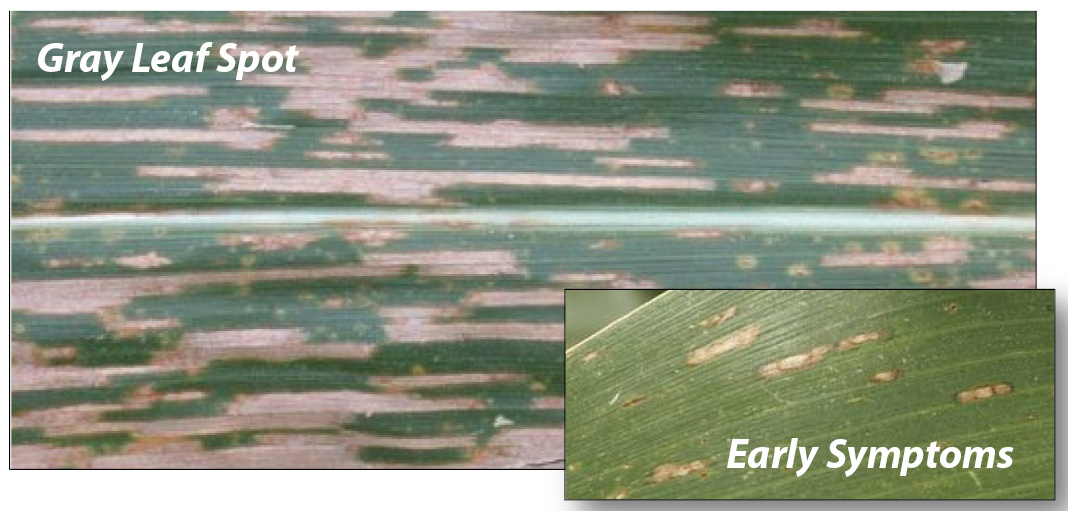
Northern Leaf Blight
Symptoms – Long elliptical lesions with a gray to tan color. Symptoms appear from V8 through kernel dent stage. Lesions can appear anywhere in the canopy and will quickly spread throughout the canopy in favorable conditions.
In humid conditions, small black spores often develop on lesions. Lesions eventually combine and will destroy entire leaves. Premature plant death can occur in worse case scenarios.
Favorable environment – Northern leaf blight overwinters on corn residue and spreads by splashing water and wind. It’s more abundant in years with moderate temperatures (less than 85° F), high humidity, and frequent rainfall.
Management – Northern leaf blight can be controlled with a timely foliar fungicide application. If established pre-tassel, multiple applications may be necessary.

Common Rust
Symptoms – Common rust infects both upper and lower leaf surfaces. Rust pustules are oval to rectangular in shape and are dark orange to brick red in color. Leaf tissue surrounding the pustules will turn yellow and eventually die. Dark red powdery spores will erupt out of the pustules. Over time these spores darken and will create a dark cloud during harvest often turning machine surfaces black.
Favorable environment – High humidity, night temperatures of 65° to 70°F and daytime temperatures less than 80°F favor development and spread. Common rust does not overwinter in the Midwest, but arrives from spores that are carried on storms originating in the southern United States.
Management – Common rust rarely reaches levels causing economic injury but if management is needed, fungicides provide control of common rust.
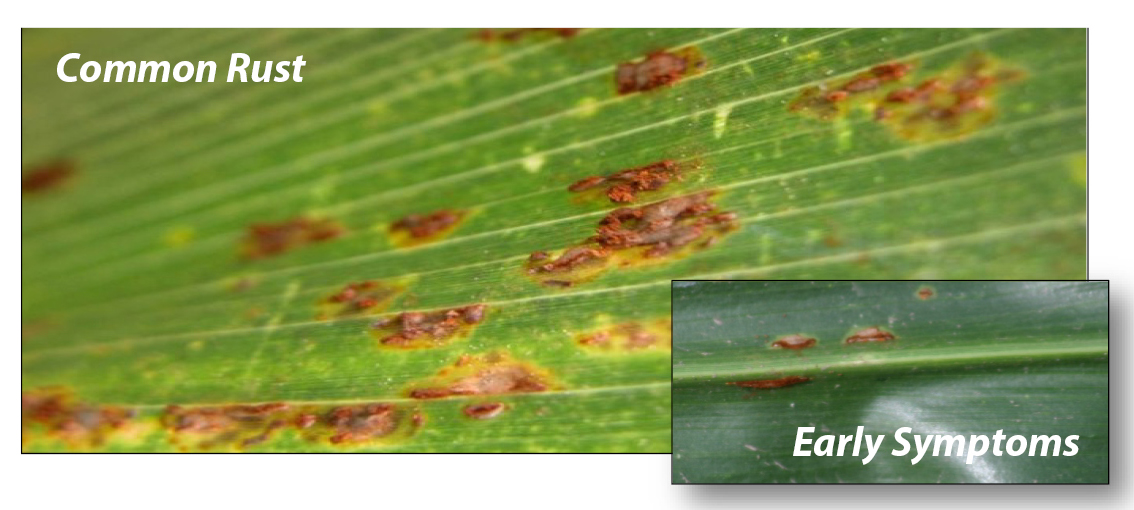
Southern Rust
Symptoms – Southern rust primarily infects the upper leaf surface. Rust pustules are smaller than common rust, more circular, and are more orange in appearance. Pustules don’t develop as fast as common rust and spores don’t rupture from pustules as early. Similar to common rust, southern rust spores darken over time and will create a dark cloud during harvest often turning machine surfaces black.
Favorable environment – High humidity and temperatures above 80° F favor disease development. Southern rust does not overwinter in the Midwest, but spores are carried up in storms originating in the southern United States.
Management – Can be controlled with a timely foliar fungicide application. Due to the aggressive nature of southern rust, late fungicide applications (up to Dent) are warranted if conditions are favorable to its spread.
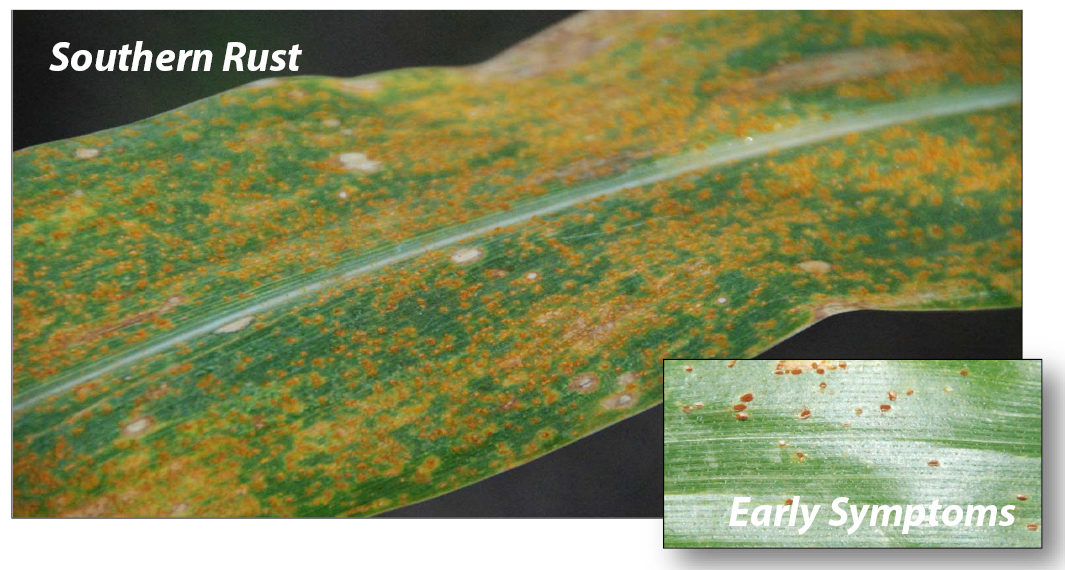
Tar Spot
Symptoms – Tar spot appears as black raised bumps resembling tar or black paint and can be present on both sides of leaves, as well as on husk and tassel tissues in severe cases. Tar spot cannot easily be scrapped off of leaf surfaces using your finger or fingernail. Spots can appear as a raised black bump on otherwise green healthy plant tissue, or it can be surrounded by a brown to tan halo lesion resulting in a “fish-eye” appearance.
Favorable environment - Ideal conditions for disease development are 60-70°F with relative humidity 75% or greater and prolonged periods of leaf wetness (7+ hours). Infection and new spore development can occur within 14 days, and multiple spore release events can occur within a growing season. Corn is susceptible to infection at all growth stages.
Management – Many common fungicides are labeled for control or suppression of tar spot. However, information around application timing and number of applications is very limited due to the relatively new presence of tar spot in the Midwest. Despite the lack of understanding about fungicide control of tar spot specifically, fungicides well suited for the control of other common leaf diseases have provided large yield gains in the presence of tar spot.
Goss Wilt
Symptoms – Goss’ wilt is different than most corn diseases in that it’s a bacterial disease. It has long irregular shaped lesions with wavy margins. Goss’ wilt can appear anywhere in the canopy as water soaked dark green lesions that eventually expand and turn brown. Lesions often contain small black structures than can’t be removed when rubbed.
Infected leaves will have a glossy appearance due to oozing of exudate from bacteria. Goss’ wilt can systemically infect plants causing discolored vascular tissue, wilted leaves, and eventual plant death. The leaf phase of Goss’ wilt can also cause premature plant death if it spreads throughout the plant canopy.
Goss’ wilt is easily misdiagnosed as northern leaf blight. The distinguishing symptoms of Goss’ wilt are the glossy appearance of infected leaves and black speckles that can’t be removed when rubbed.
Favorable environment – Goss’ wilt overwinters on corn residue and is most common in areas that have experienced strong storms. Goss’ wilt enters the plant through wounds caused by hail, wind, or blowing soil. Moderate temperatures and rainfall favor the spread of Goss’ wilt throughout the plant canopy.
Management – Fungicide applications will not prevent or control Goss’ wilt. There are no proven treatments for Goss’ wilt once it becomes established, but identification will help you manage that field going forward. Rotation or selecting a hybrid with a high tolerance to Goss’ wilt will limit damage in future years.
